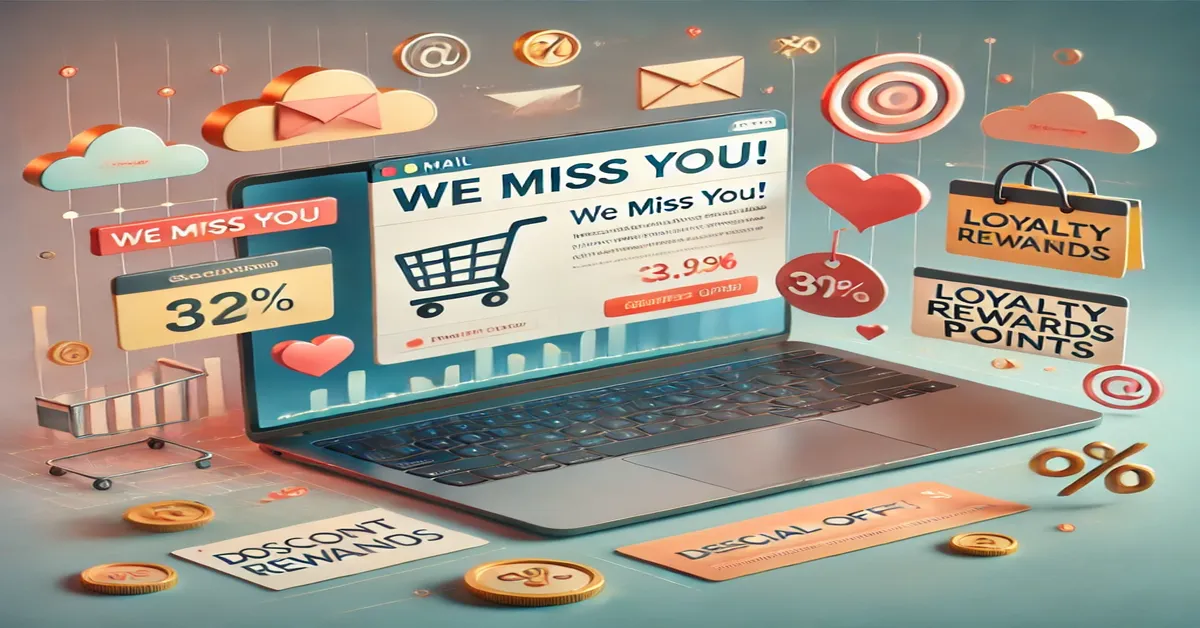In eCommerce, customer engagement is key to long-term success. However, even the most loyal customers can become disengaged over time. Whether they stop opening your emails, browsing your website, or making purchases, inactive customers represent lost potential. This is where re-engagement campaigns come in. These targeted email campaigns are designed to revive interest, bring back lapsed customers, and encourage them to re-engage with your brand.
In this article, we’ll explore effective strategies for building successful re-engagement campaigns that can help breathe new life into your customer base.
1. Identify Inactive Customers
The first step in any re-engagement campaign is identifying which customers are inactive. Typically, a customer is considered inactive if they haven’t interacted with your brand within a set period, such as 3 to 6 months. This could mean they haven’t opened an email, clicked on a link, or made a purchase in that time frame.
It’s important to segment your audience based on their level of inactivity. You can create different tiers, such as:
- Mildly inactive: Customers who have not engaged for 1-3 months.
- Moderately inactive: Customers who have not engaged for 4-6 months.
- Completely inactive: Customers who have not engaged for more than 6 months.
By segmenting customers in this way, you can tailor your re-engagement efforts to the degree of inactivity. For instance, mildly inactive customers may respond to a light nudge, while completely inactive customers may need a stronger incentive to return.
2. Craft a Compelling Subject Line
As an Email Marketing Agency, once you’ve identified your inactive customers, it’s time to create the content that will win them back—starting with the subject line. A well-crafted subject line can make all the difference in whether your email gets opened or ignored.
For re-engagement campaigns, subject lines should spark curiosity or tap into a sense of urgency. Here are some examples:
- “We Miss You! Here’s a Special Offer Just for You.”
- “Still Interested? Come Back and Save 20%!”
- “It’s Been a While—Let’s Catch Up with Something Special!”
The goal is to entice the customer to open the email by making them feel valued or offering an exclusive reward for their attention.
3. Offer an Incentive to Return
A key element of any re-engagement campaign is offering a compelling incentive to encourage customers to take action. Inactive customers may have drifted away because they lost interest or found a competitor’s offer more attractive. To win them back, you need to make it worth their while.
Common incentives include:
- Exclusive Discounts: Offer a special discount code or percentage off their next purchase. For example, “Enjoy 15% Off Your Next Order—We Miss You!”
- Free Shipping: Free shipping can be a powerful motivator, especially if your competitors charge for delivery.
- Loyalty Points or Rewards: If you have a loyalty program, offering bonus points or exclusive rewards can entice customers to return.
Ensure the incentive is meaningful enough to catch their attention, but also aligned with your overall marketing strategy and profitability goals.
4. Personalise Your Message
Personalisation is crucial in any email marketing campaign, but it’s especially important in re-engagement efforts. When a customer becomes inactive, it often means they feel disconnected from your brand. Personalisation helps rebuild that connection by making the customer feel seen and valued.
You can personalise re-engagement emails by:
- Using Their Name: A simple yet effective touch is addressing the customer by their name in both the subject line and email body.
- Referencing Past Purchases: Remind the customer of previous purchases they made. For example, “We hope you’re enjoying your new trainers! Here’s 20% off your next pair.”
- Sending Tailored Product Recommendations: Use their browsing or purchase history to suggest relevant products they may be interested in.
When a customer sees content that’s tailored to them, they’re more likely to re-engage because it shows that your brand understands their needs and preferences.
5. Create a Sense of Urgency
Urgency is a powerful motivator in re-engagement campaigns. It creates a fear of missing out (FOMO) that can push customers to take immediate action. Phrases like “Limited Time Offer” or “Only Available for the Next 48 Hours” can drive customers to act quickly.
For example, you could say, “Your 20% Off Ends Soon—Act Fast!” This not only gives customers an incentive to return, but also compels them to act within a specific time frame, increasing the likelihood of conversion.
6. Optimise the Timing
Timing is everything in a re-engagement campaign. If you send an email too soon after a customer becomes inactive, they might ignore it. Wait too long, and they may have forgotten your brand entirely. Finding the right timing for your re-engagement efforts is key to success.
A good approach is to create a series of re-engagement emails that are spaced out over a few weeks or months. For example:
- The first email could be sent after 3 months of inactivity, offering a light incentive like free shipping.
- The second email, after 4 months, could offer a more significant discount.
- The final email, after 6 months, could be a last-chance offer before you consider removing them from your list.
By gradually increasing the urgency and value of the offers, you can maximise your chances of re-engaging inactive customers without overwhelming them.
7. Make It Easy to Unsubscribe
While your primary goal is to win back inactive customers, you should also respect their choice if they no longer want to receive your emails. Always include an easy-to-find unsubscribe link in your emails. This ensures that customers who are no longer interested can opt out gracefully, reducing the risk of spam complaints and maintaining your email list’s health.
Conclusion
Re-engagement campaigns are a crucial part of maintaining a healthy and profitable eCommerce business. By identifying inactive customers, offering personalised content, providing valuable incentives, and creating a sense of urgency, you can effectively bring lapsed customers back to life. Remember, not all customers will re-engage, but by focusing on those who do, you can breathe new life into your email list and boost long-term customer retention.







